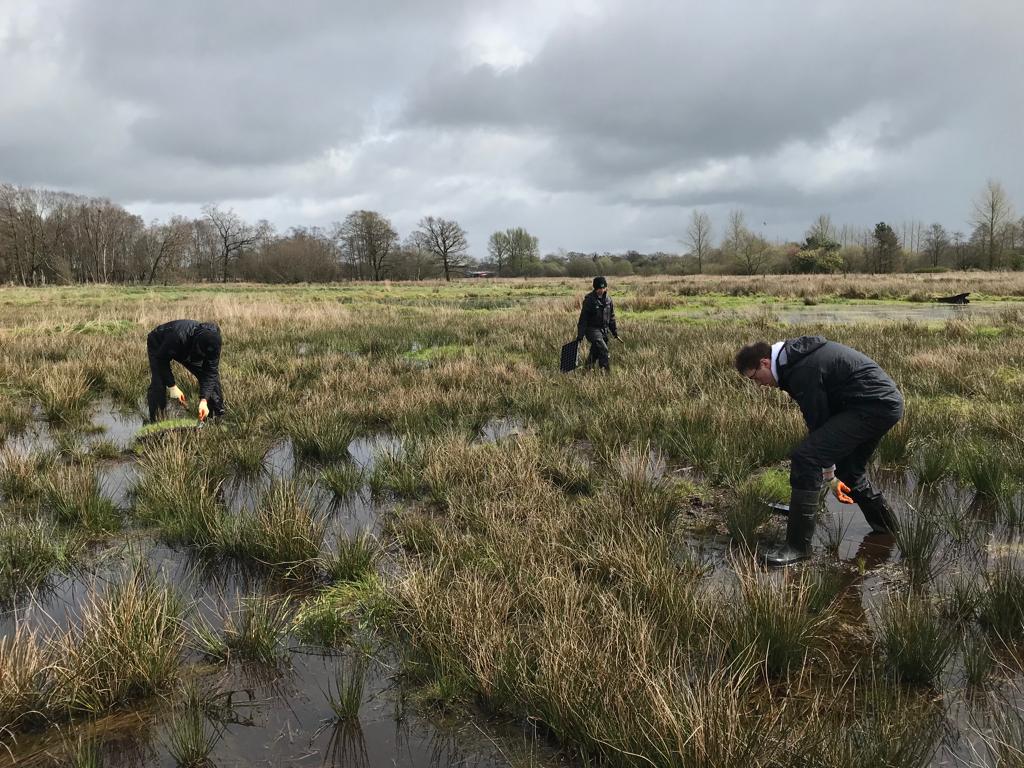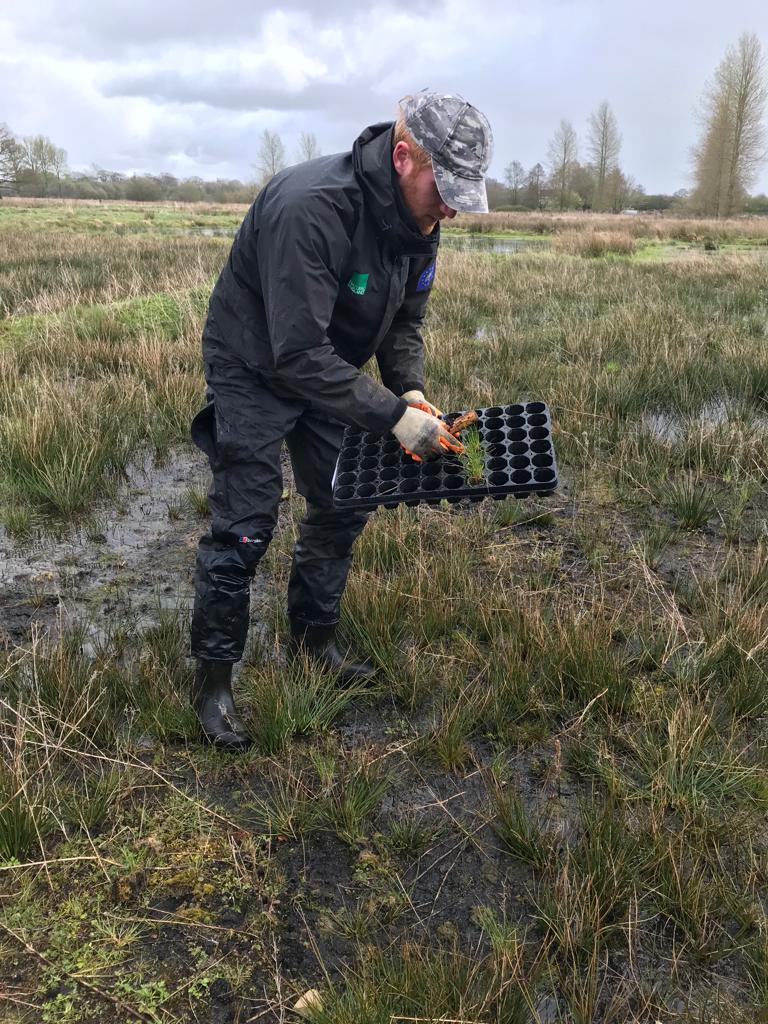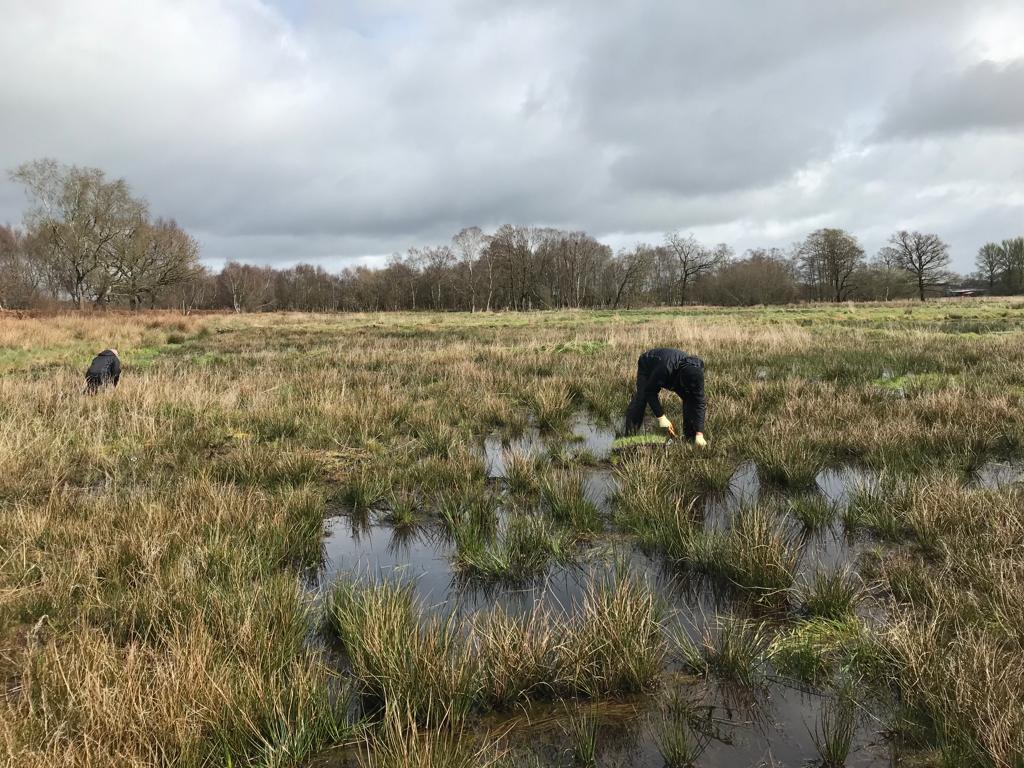Planting 8000 Cotton Grass Plugs
April 7, 2022

On Thursday 7th April, a team of Natural England staff and volunteers managed to plant 8000 plugs of Cotton Grass in an effort to restore the bog habitat of the Fenn’s, Whixall & Bettisfield Mosses. This has been undertaken as part of a larger multi-million pound project called Restoring Marches Mosses BogLIFE. Funded by an EU LIFE grant and a National Lottery Heritage grant, the project aims to restore Britain’s third largest lowland raised bog.
The 8000 Cotton Grass plugs were placed over two compartments of the bog which had been bunded. Bunding is a restoration method which involves repacking the peat in a linear format, building compartments which slows the flow of rainwater of site and allows for wetter and better mosses. This was done on trial fields, the Wakelings field and the Shropshire Wildlife Trust Field, with the aim of seeing how the addition of bog species to sites helps to restore them to bog habitat.
Cotton Grass and Hare’s tail are two common species in a healthy bog, so planting is a great way of encouraging uptake and promoting better bogs. These two species are being planted in different combinations, meaning that vital information can be gathered towards the effects and success of the grass.
Another huge benefit of planting the Cotton Grass, is because it is considered a companion plant to Sphagnum, aiding in its development. Growing sphagnum stores water and prevents the decay of dead plant material, which in turn develops peat, which is of great importance in capturing carbon. The benefits of sphagnum and peat doesn’t stop at carbon storage however, as it also lowers the bog pH which contributes to the specific bog conditions, making sphagnum a great ecosystem engineer.
Nathan Brake, who set up and coordinated the planting, said this of the project: “We are hoping that the cotton grass we plant will take hold and create better nursery conditions for the sphagnum plants, planted in 2020-2021. This will move the area back towards its original boggy conditions and allow endemic moss species to thrive. It will also provide lessons for us and other land managers who may wish to restore sphagnum communities on degraded bog in future.”
Peatlands are amongst the most carbon-rich ecosystems on Earth. Not only are they vital for carbon sequestration and fighting climate change, but they reduce flood risk and support biodiversity. The work done planting the Cotton Grass is a major step towards restoring the mosses, and for educating us along the way.








